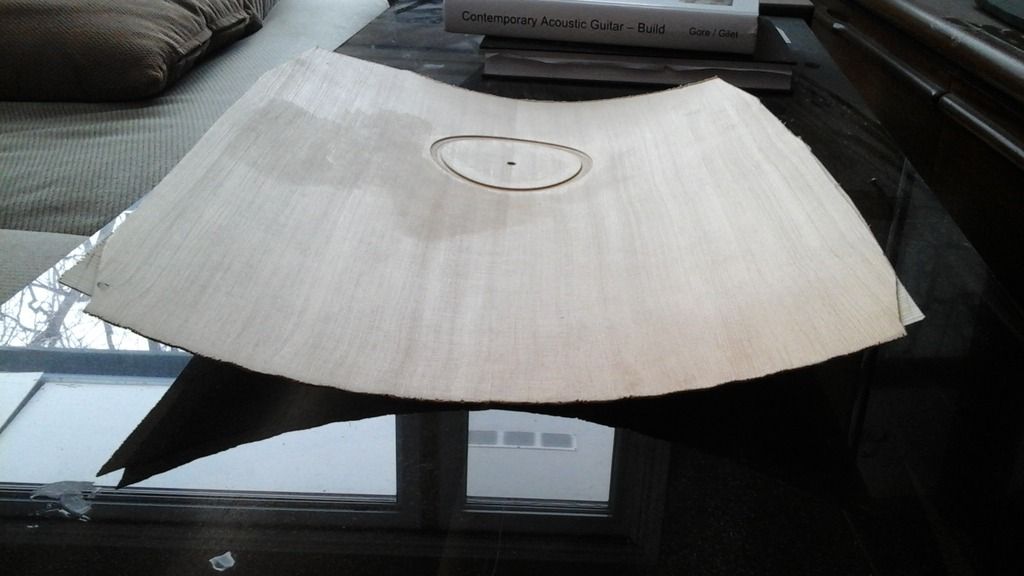DennisK wrote:
Do you have a way to control the humidity in your shop? If not, I'm guessing the cold air mass that's been sweeping across the country made it to your area. To avoid similar problems in the future, make sure you only glue braces when the humidity is low. I time my building around the seasons so I only brace in winter when it's cold and dry. Alternatively you could make a heated box to dry things. Sometimes in a pinch I'll warm the top/back in the oven for an hour or so (not too hot, just like 100F) to dry out just before glue-up. I prefer the natural approach so I know exactly what the guitar's equilibrium RH% is, but the oven method seems to work ok too.
Also, I highly recommend making a wood hygrometer. It's really easy if you have some soundboard offcuts lying around. Two strips glued together, one long grain and one cross grain. Sand it down until it's fairly flexible (around 1mm total thickness), and attach it to a base of some sort, with a piece of cardboard or something sticking up behind it for visual reference.
The numbers ended up being useless. Can't really calibrate it since it's subject to the hysteresis effect of wood (a piece of wood acclimated from high humidity down to a target RH% will remain more swollen than it would be if dried below the target and then acclimated up), but that actually makes it more accurate than a regular hygrometer for interpreting the condition of the wood you're working with. It's also easily visible from across the room. Use something else for the first year or two, but watch the wood one and over time you'll learn what its overall range is and what is good bracing conditions.
Also, I highly recommend making a wood hygrometer. It's really easy if you have some soundboard offcuts lying around. Two strips glued together, one long grain and one cross grain. Sand it down until it's fairly flexible (around 1mm total thickness), and attach it to a base of some sort, with a piece of cardboard or something sticking up behind it for visual reference.
Attachment:
Hygrometer.jpg
The numbers ended up being useless. Can't really calibrate it since it's subject to the hysteresis effect of wood (a piece of wood acclimated from high humidity down to a target RH% will remain more swollen than it would be if dried below the target and then acclimated up), but that actually makes it more accurate than a regular hygrometer for interpreting the condition of the wood you're working with. It's also easily visible from across the room. Use something else for the first year or two, but watch the wood one and over time you'll learn what its overall range is and what is good bracing conditions.
This was just a try at making a laminate. Found out why they use three layers rather than two. Kind of dry in my house right now.
